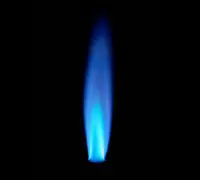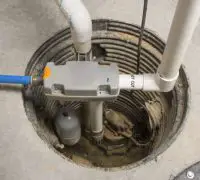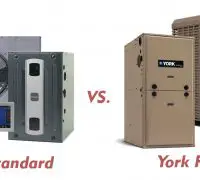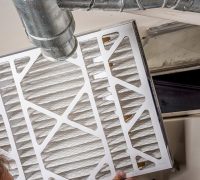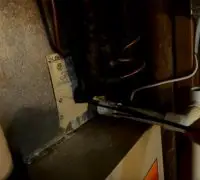If you're looking to fix or replace your Heating or A/C system, we can connect you with a reliable and cost-effective professional in your area.
For those of you who are already determined to solve their Goodman furnace’s troubleshooting, we should remind you that you will be handling possibly lethal voltage and highly flammable gas. Working safely is crucial, and if you cannot do it otherwise, you shouldn’t do it at all. Most of the Goodman furnaces out there were installed in the 80s, and they still work at 80% of their capacities. However, troubleshooting is possible, so you should be prepared.
Page Table of Contents
Why could you be needing Goodman furnace troubleshooting?
The moment you understand Goodman furnace troubleshooting, you get to comprehend 80% of the common failures. Don’t rush into calling the professionals as you may solve some of the common problems on your own. You don’t need to be a professional to comprehend the most frequent issues with Goodman furnaces. They’re easy to install and easy to identify the cause of the problems more often than you think. Here’s how you should begin:
- Take a good look at the thermostat.
- Make sure that the power goes through the breaker, the switch, fuse, and indicator light.
- Check the filter
- The inline gas valve has to be open.
- It would help if you had ignition confirmation for the flame sensor.
- Take a look at the blockage in the chimney and the pressure switch.
- If nothing works, you should call the professionals.
Some of the issues are rather effortless to solve, but you shouldn’t tackle the most complicated problems. Not only that, you could aggravate the situation, but you may also put yourself in danger while trying to solve it.
What tools will you need?
The task you will perform will require you specific tools for the job. A toothbrush, toothpick, cotton swabs, scrub brush, rags, and a replacement filter will be necessary if you’re cleaning the furnace. If you’re planning a more technical approach, you should make sure to have within reach:
- Tape measure
- Hammer
- Cordless drill and cordless saw
- Screwdriver
- Wirecutter
- Pipe wrench
- Bits
- Utility knife
- Toolbag
Even if you may already have some of these tools in your shop, you should never start drilling in the furnace without knowing how to handle it right. Don’t use a cordless saw for the first time with your furnace, as you may put your life in danger. Even if you unplug everything, you always have to ensure that you’re all safe as furnaces pose a high risk for safety. More than 200 people die in the US every year due to furnace ventilation issues in the house.
Why checking the thermostat is a starting point.
Even if it sounds silly to you, checking the thermostat will give you useful information. It’s quite often that you call the professional for troubleshooting, only to realize that the batteries on the thermostat were empty.
You should look for the digital display and see if it’s cluttered. If so, you may need to replace the thermostat, but only an HVAC professional will be able to do it. Ensure you take a look at the batteries or check the temperature setting to see if it’s set too high enough. Some loose wires or wires touching could cause the problem of the display as well. You can tighten up the wires or tidy them up for solving the issue.
Test the thermostat
You only need a small to the medium-sized screwdriver and a tiny 18-gauge wire for testing the thermostat. Go to the thermostat, put aside the doors, and see where the circuit board is (it’s where the thermostat is connected to the furnace). It would help if you detached the wires from the “R” and “W” terminals; most of the time, these wires are red and white. Continue with attaching the jumper wire between the W and R terminals, securing the furnace’s door. Take a look to see if it’s working. If it does, the thermostat isn’t causing the issue.
Check the power
Sometimes, some small issues can be the cause, and power is one to name. You should see if the ability to and from the furnace is working. Typically, the furnace will try to run, making a noise. If the blower runs without the heat, you don’t have a power problem. If not, you should look at the furnace’s switch, observing if the red light of the furnace’s circuit board is switched on.
If power is the problem, you should still call an electrician to solve the problem. Working around high voltage is extremely dangerous.
Safety first
When we’re talking about Goodman furnace troubleshooting, you can never be too safe. Always clean and maintain the furnace on a regular basis, as it’s effortless, and you only need a couple of tools to do it. But try not to set the gas burners, as they’re fundamental for your furnace’s functioning. You must set them correctly for proper gas distribution in your furnace. When the setting is wrong, you may cause a flash fire.
All in all, prevention is the most crucial aspect to consider with Goodman furnace troubleshooting. You should always take the steps for expanding the lifespan of the furnace. If you’re not sure what’s wrong, you should contact the HVAC professional as he has the skills and knowledge to address the problems. Let him take care of the dangerous aspects, but don’t hesitate to think about what could be wrong with your furnace. Sometimes, you may not need to call the professional.
We can definitely connect you with a trusted provider in your area to repair, replace or maintain your heating and A/C systems. Why not let us find a professional for you?


